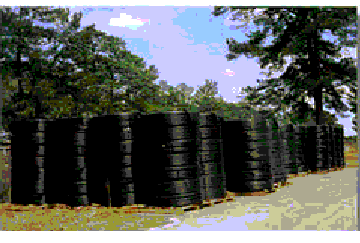the federal government except for procurement and administrative
costs. The improvements are being paid for over 20 years by the energy and
maintenance cost savings resulting from the retrofit.
When the project was under development, none of the
1.5- to 2-ton GCHPs on the market had high enough efficiency and low enough
installation costs to make the project feasible. This obstacle was overcome
through the efforts of the GCHP manufacturer, ClimateMaster, Inc., to provide
units to project specifications.
This heat pump is a packaged water-to-air unit that
is factory-charged with refrigerant, which avoids the problems associated
with field-charged, split-system refrigeration systems. Since there is no
interface to the ambient air, defrost controls are not required. And because
the units are not exposed to the ambient weather, conditions, performance
degradation resulting from corrosion, vandalism, or clogging with leaves
or mud are not an issue.
Installation costs were reduced significantly by building
the pump and valves that circulate water through the ground loop, along
with controls, into the unit. This avoids the expense of mounting components
on walls and making multiple power and piping connections. It also saves
valuable floor space and makes for a more aesthetic installation.
Desuperheaters, which are used for heating the domestic
hot water along with the double-wall heat exchangers and circulator for
the water from the hot water storage tank, were also built into the unit
so that field installation was not required.
The heat exchanger’s underground piping is high-density
polyethylene, which is often guaranteed by the manufacturer for 50 years.



